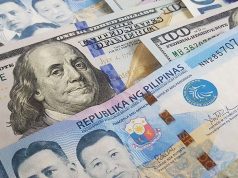PHL factory gain strongest in 6 months
BUSINESS for manufacturers marked July with the strongest improvement in six months — though still described as “moderate” — on the back of sales and job growth, according to results of the latest survey IHS Markit conducted for Nikkei, Inc., keeping the country in third place behind Myanmar and Vietnam among seven tracked Southeast Asian economies.
The IHS Markit Philippines Manufacturing Purchasing Managers’ Index (PMI) logged 52.1 in July compared to June’s 51.3 and the year-ago 50.9, marking the strongest improvement in six months or the 52.3 recorded in January.
A PMI reading above 50 indicates improvement in business conditions from the preceding month, while a score below that point signals deterioration.
The manufacturing PMI consists of five sub-indices, with new orders having the heaviest weight at 30%, followed by output with 25%, employment with 20%, suppliers’ delivery times with 15% and stocks of purchases with 10%.
“New order growth was up notably in July, easing some worries in recent months that the manufacturing environment was facing a slowdown,” IHS Markit Economist David Owen said in a press statement.
“Output… increased at a solid rate, albeit one that was weaker-than-average for the Filipino goods-producing sector.”
The press release noted that manufacturers faced higher demand, reflecting customers’ higher spending power. Noting that household consumption contributes about 70% to national output, the Philippine government cut personal income tax rates in January last year — while increasing or adding levies on several goods and services — in hopes of spurring spending.
According to the statement, “the increase in demand was largely domestic,” as new export orders marked the second successive monthly reduction. “A number of firms reported a lack of orders from foreign clients, although the overall rate of decline was slightly softer than in June,” the press release read.
Production “increased solidly,” though at a “softer” pace than in June.
Employment increased, marking the first rise in jobs since February. “Companies often expanded their work forces to meet higher output requirements, whereas others saw employment reduced due to resignations and decreased hiring…” the statement read.
Selling prices rose at the softest rate in over two years, with only three percent of respondents reporting an uptick.
Input cost inflation was also “soft” despite picking up “marginally” from June, as a stronger peso helped ease input costs.
“Despite the sudden uplift in demand, price pressures appeared unaffected. Input prices rose at only a modest pace, with an improvement in the exchange rate with the US dollar helping to ease the impact of higher raw material prices. This fed through into the softest increase in selling prices at manufacturers since June 2017. Overall, this should help to maintain strong sales growth if demand conditions remain elevated,” Mr. Owen said.
In the face of strong output and sales growth, manufacturers remained bullish on future prospects.
Regionwide, the Philippines remained third behind Myanmar (52.9 from 53 in June) and Vietnam (52.6 from 52.5) for the second straight month, but was still stronger than Southeast Asia’s 49.5 reading in July that was down from the preceding month’s 49.7.
Mr. Owen noted that the region’s “rate of deterioration was the steepest in two years, driven by lower output and employment.”
“Firms were led to reduce production levels on the back of only marginal increases in new orders in recent months.” — BML




